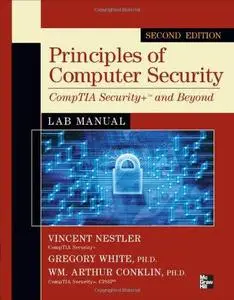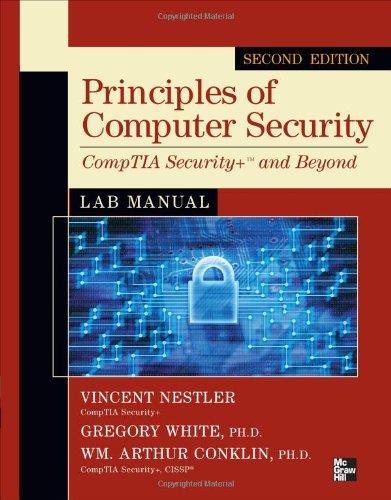Principles of Computer Security CompTIA Security+ and Beyond Lab Manual By Vincent J. Nestler, Gregory B. White, W. Arthur Conklin
2000 | 331 Pages | ISBN: 0071748563 | PDF | 6 MB
2000 | 331 Pages | ISBN: 0071748563 | PDF | 6 MB
Written by leading IT security educators, this fully updated Lab Manual supplements Principles of Computer Security: CompTIA Security+ and Beyond, Second Edition Principles of Computer Security Lab Manual, Second Edition, contains more than 30 labs that challenge you to solve real-world problems with key concepts. Clear, measurable lab objectives map to CompTIA Security+ certification exam objectives, ensuring clear correspondence to Principles of Computer Security: CompTIA Security+ and Beyond, Second Edition. The Lab Manual also includes materials lists and lab set-up instructions. Step-by-step, not click-by click, lab scenarios require you to think critically, and Hint and Warning icons aid you through potentially tricky situations. Post-lab observation questions measure your understanding of lab results and the Key Term Quiz helps to build vocabulary. Principles of Computer Security Lab Manual, Second Edition, features: New, more dynamic design and a larger trim size The real-world, hands-on practice you need to pass the certification exam and succeed on the job Lab solutions on the textbook OLC (Online Learning Center) All-inclusive coverage: Introduction and Security Trends; General Security Concepts; Operational/Organizational Security; The Role of People in Security; Cryptography; Public Key Infrastructure; Standards and Protocols; Physical Security; Network Fundamentals; Infrastructure Security; Authentication and Remote Access; Wireless Security; Intrusion Detection Systems and Network Security; Baselines; Types of Attacks and Malicious Software; E-mail and Instant Messaging; Web Components; Secure Software Development; Disaster Recovery, Business Continuity, and Organizational Policies; Risk Management; Change Management; Privilege Management; Computer Forensics; Legal Issues and Ethics; Privacy



